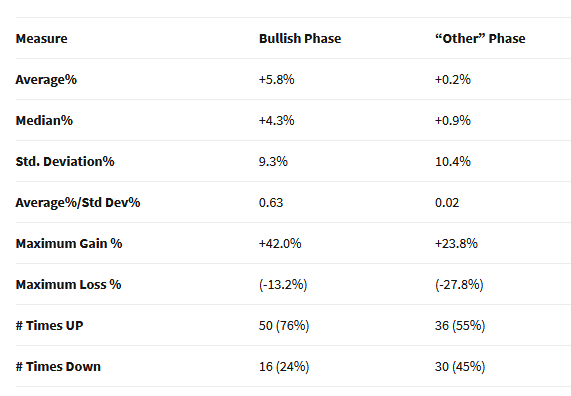There are some things that can logically be explained. And there are some things that cannot. Welcome to the latter.
I first stumbled upon something known as the “40-Week Cycle” in the stock market sometime in the 1990’s. In all candor, I don’t even remember where I first read about it. And it is by known means “magical” or a panacea of the “you can’t lose in trading” variety. But it is interesting. And the latest “Bullish Phase” began at the close on 11/24/2017.
The 40-Week Cycle “System” Rules
*A new 40-week cycle begins every 280 calendar days with an original start date of 4/21/1967 (don’t ask me why that date, ask the guy who I can’t remember who wrote about it first).
*The 1st 140 calendar days of the cycle are considered “Bullish”
*The 2nd 140 calendar days of the cycle are considered “Something Other Than Bullish”
*The Bullish phase of the cycle ends after 140 calendar days OR after the Dow Jones Industrials Average suffers a decline of 12% or more in price from its price on the entry date (this has been triggered twice – in 1974 and in 2008)
*For “System” purposes the “System” holds the Dow Jones Industrials Average during “Bullish” periods and earns annualized rate on interest of 1% when not in the market.
FYI: The latest Bullish phase began at the close on 11.24.2017 and extends through 4/13/2018 (or until the Dow closes below 20,731.03 if that occurs prior to 4/13/2018).
The Results
*$1,000 invested only during the “Bullish” phase as described above starting on 4/21/1967 grew to $42,301 through 11/24/2017
*$1,000 invested in the Dow Jones Industrials Average on a buy-and-hold basis starting on 4/21/1967 grew to $26,674 through 11/24/2017
$1,000 invested in the Dow Jones Industrials Average only during the “Other Than Bullish” phase starting on 4/21/1967 declined to $817
Figure 1 displays the “System” versus “Buy-and-Hold”.

Figure 1 – Growth of $1,000 invested using the 40-Week Cycle System (blue) versus Buy-and-Hold (red); 4/21/1967-11/24/2017
Figure 2 displays the growth of $1,000 only during the “Other Than Bullish” phase. There is not a lot of rhyme or reason to the results during this phase – sometimes great, sometimes terrible, sometime in between. Still, the bottom line is that the results are far worse than that generated during the “Bullish” phase.

Figure 2 – – Growth of $1,000 invested in the Dow Jones Industrials Average only during the “Other Than Bullish” phase; 4/21/1967-11/24/2017
Figure 3 displays some summary results comparing the “Bullish” phase to the “Other Than Bullish” phase.


Summary
For better or worse, the latest “Bullish” phase began at the close on 11/24/2017 and will last through 4/13/2018. Does this mean the stock market is guaranteed to keep rising? Not at all. But it may be one more potentially favorable sign.
Disclaimer: The data presented herein were obtained from various third-party sources. While I believe the data to be reliable, no representation is made as to, and no responsibility, warranty or liability is accepted for the accuracy or completeness of such information. The information, opinions and ideas expressed herein are for informational and educational purposes only and do not constitute and should not be construed as investment advice, an advertisement or offering of investment advisory services, or an offer to sell or a solicitation to buy any security.
